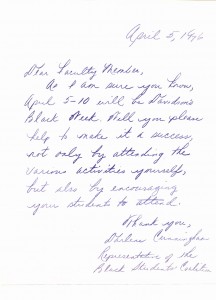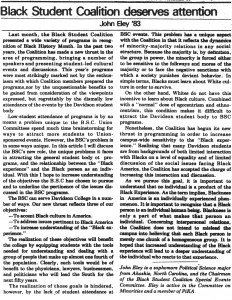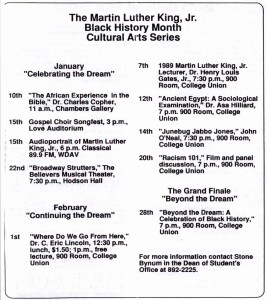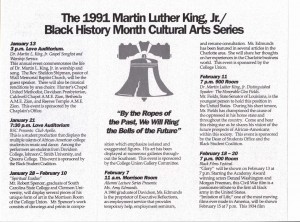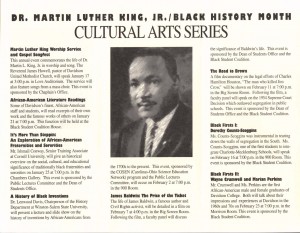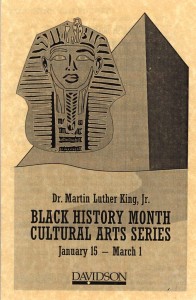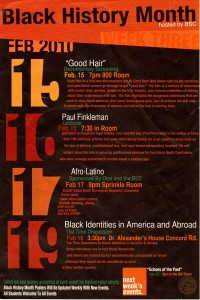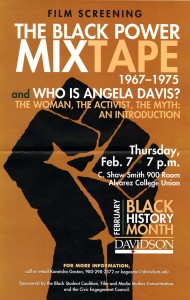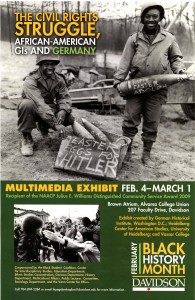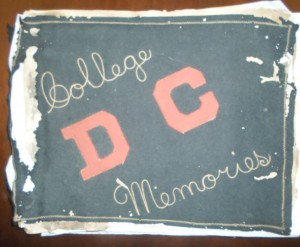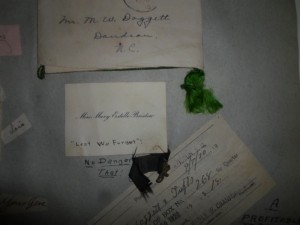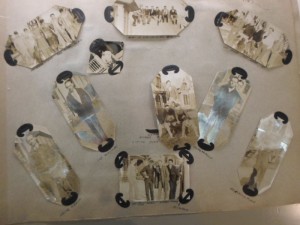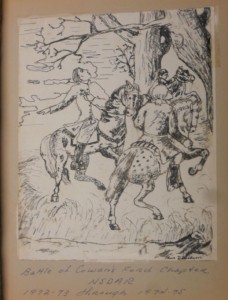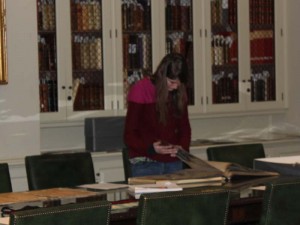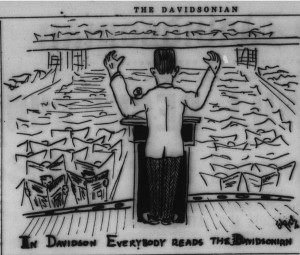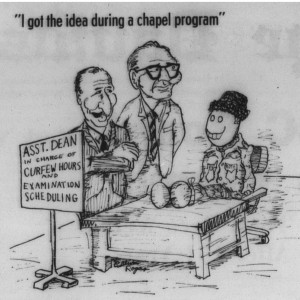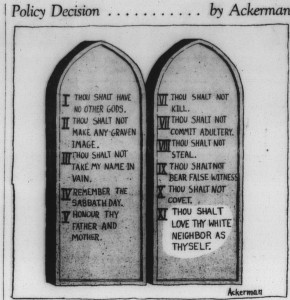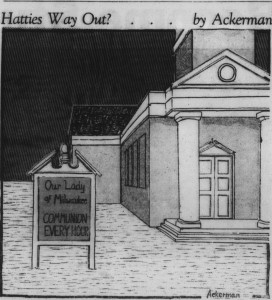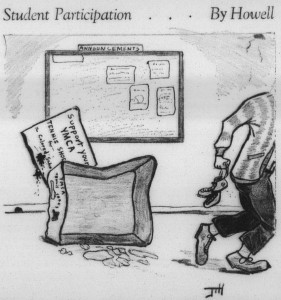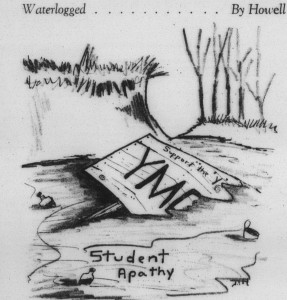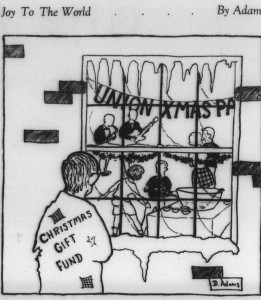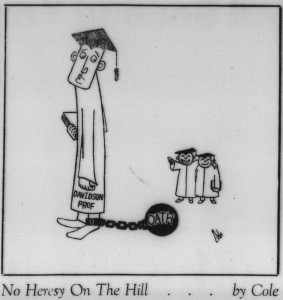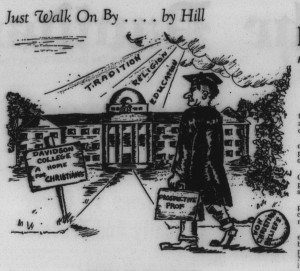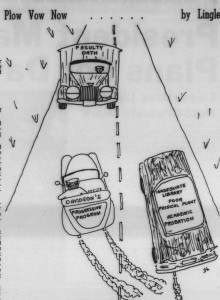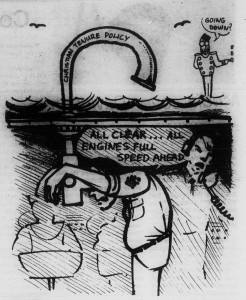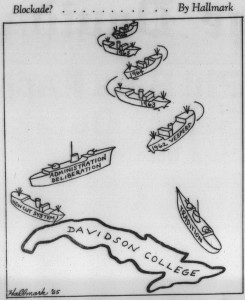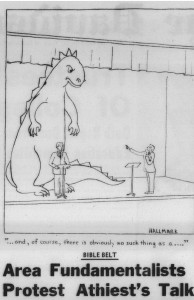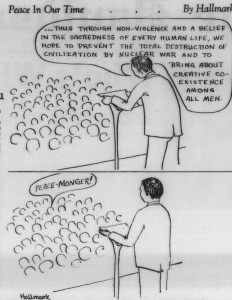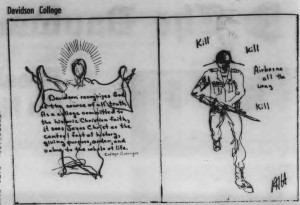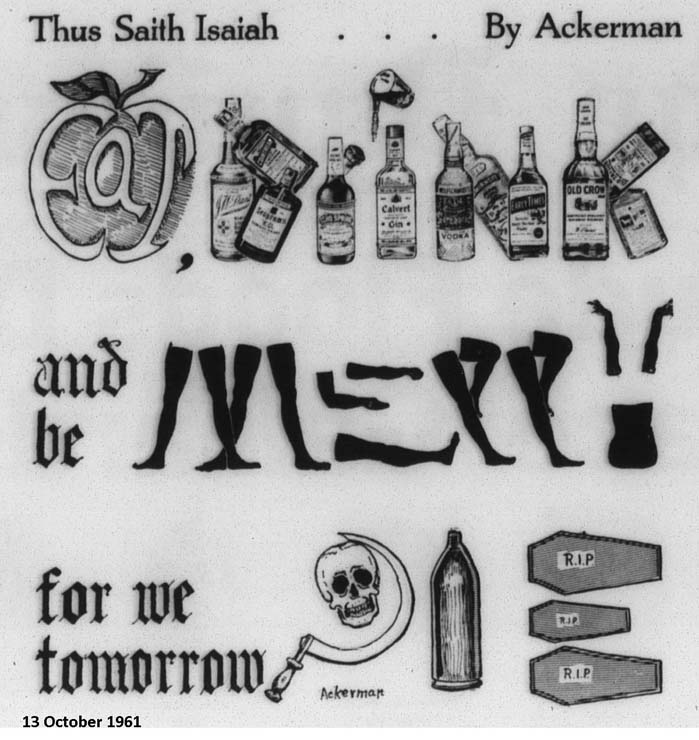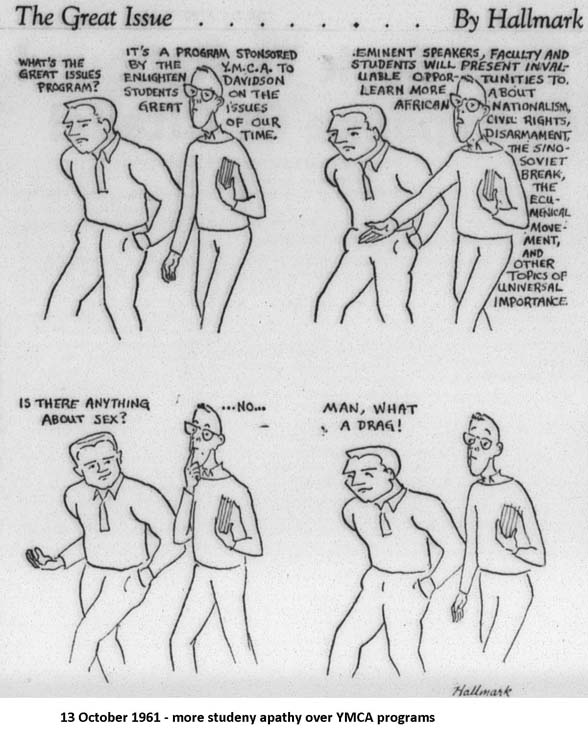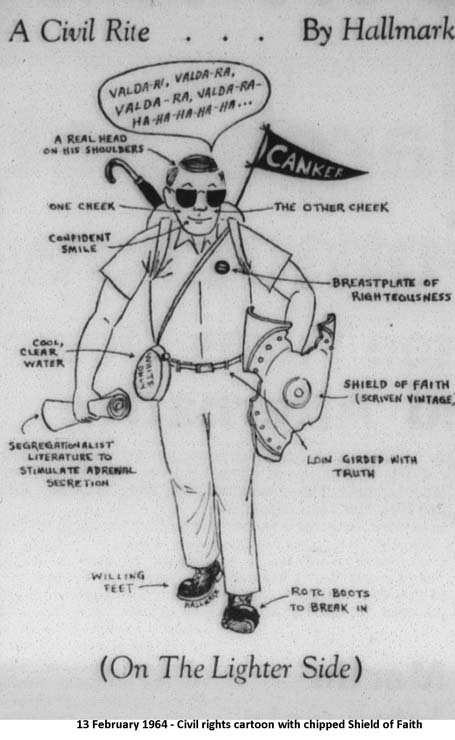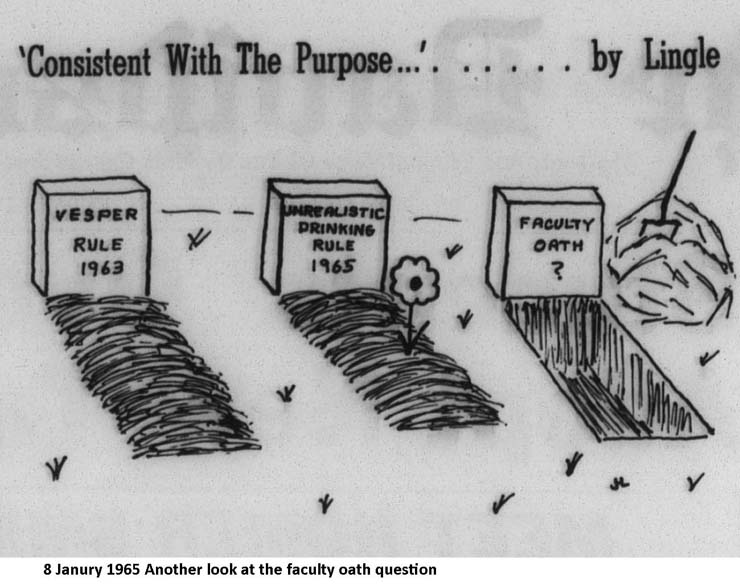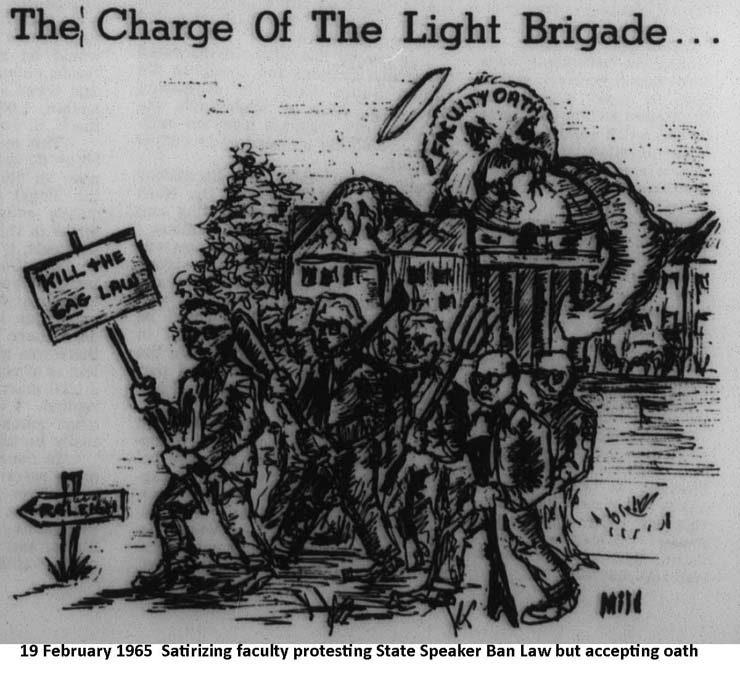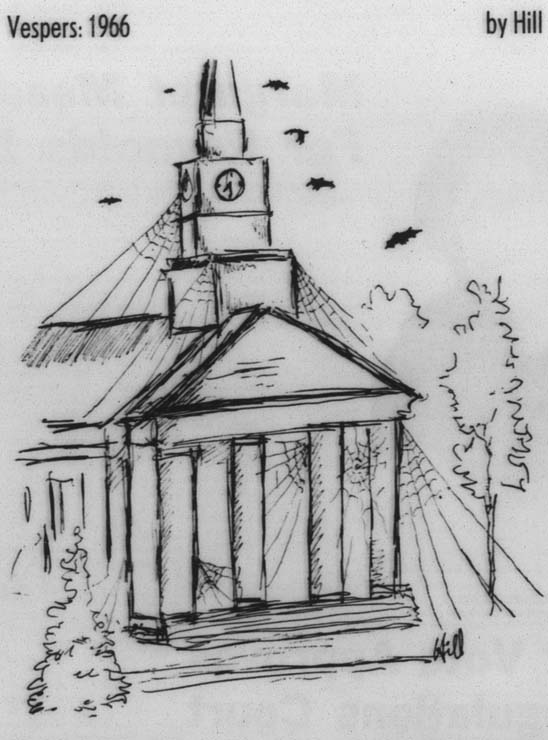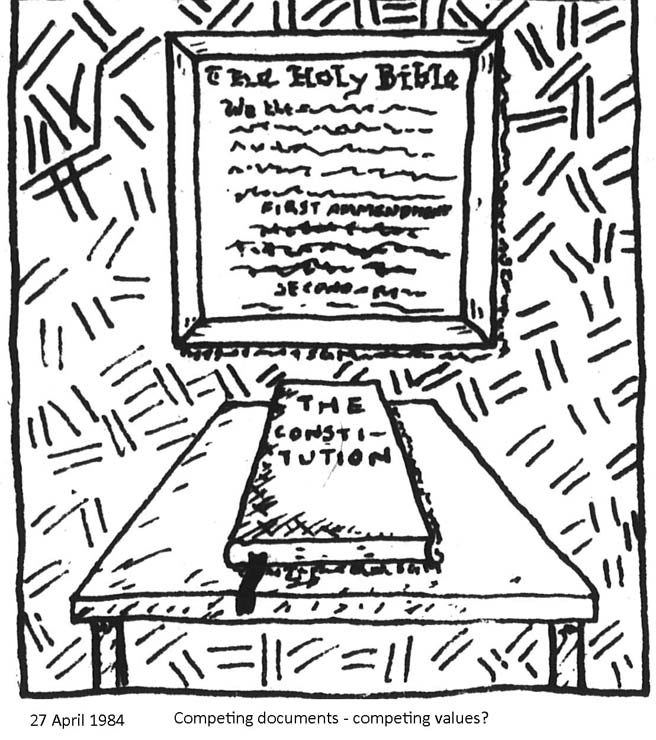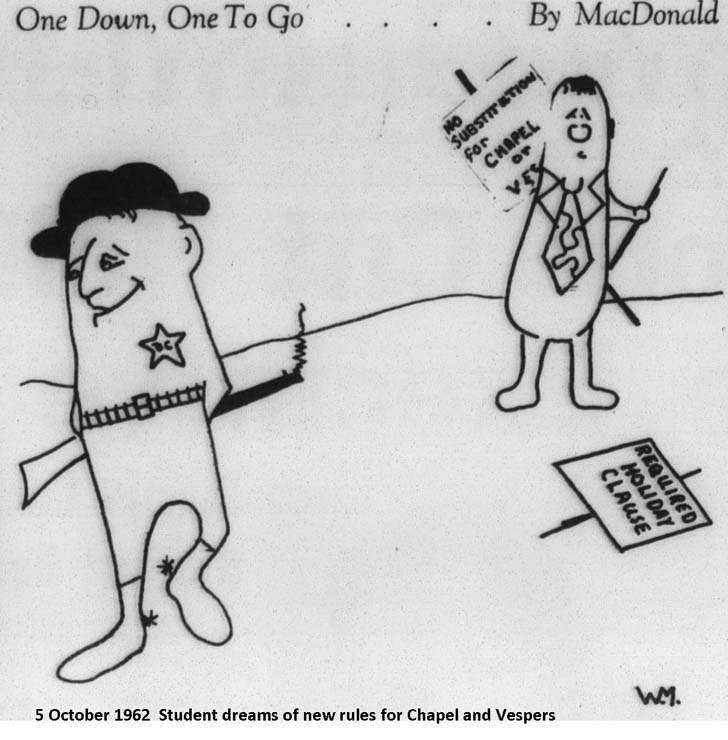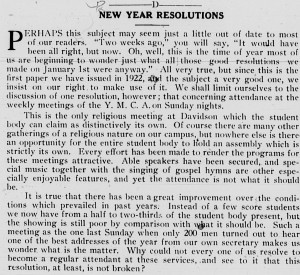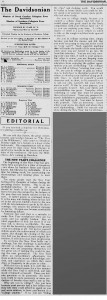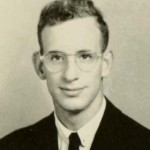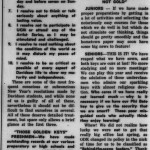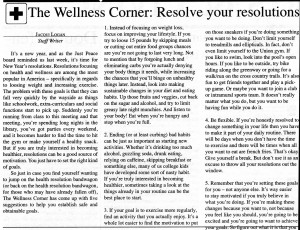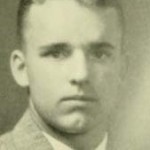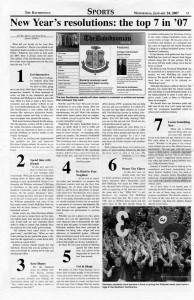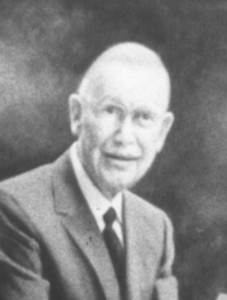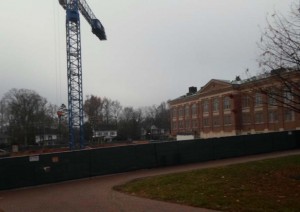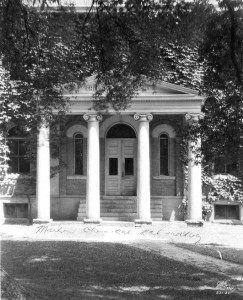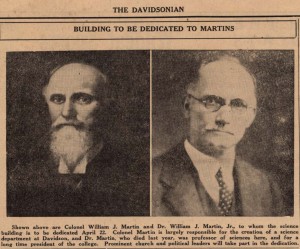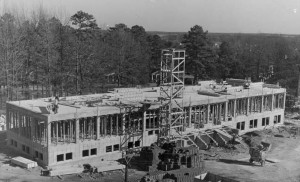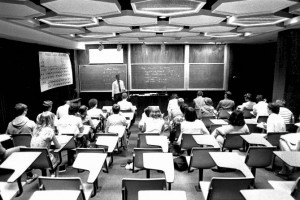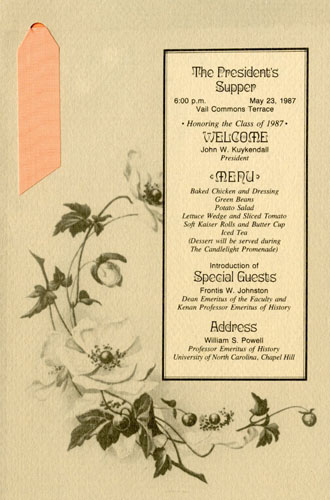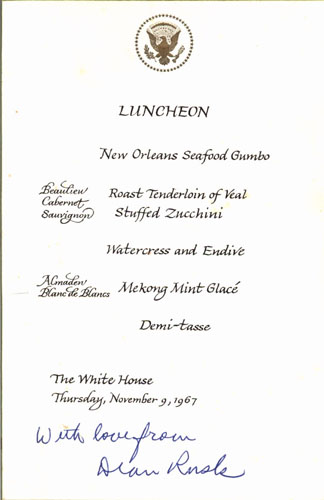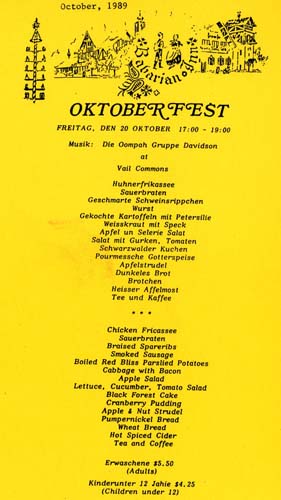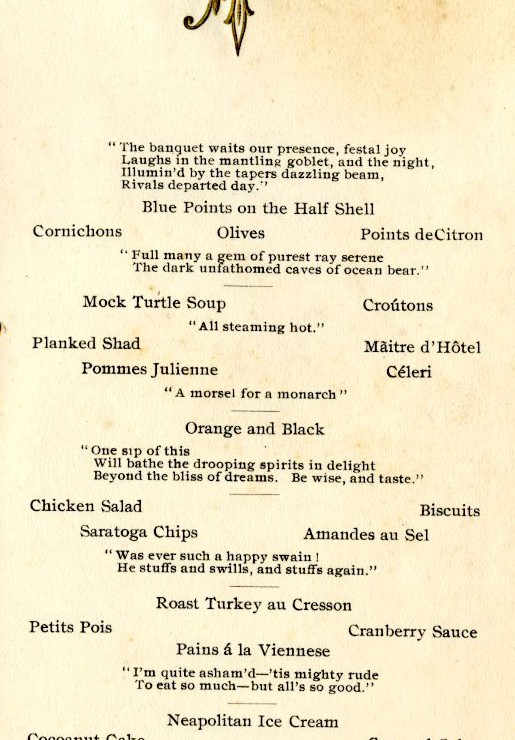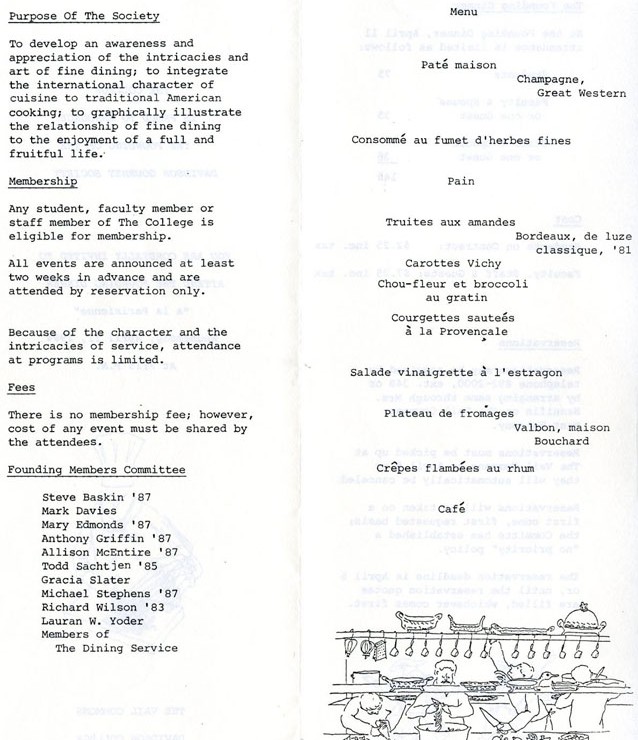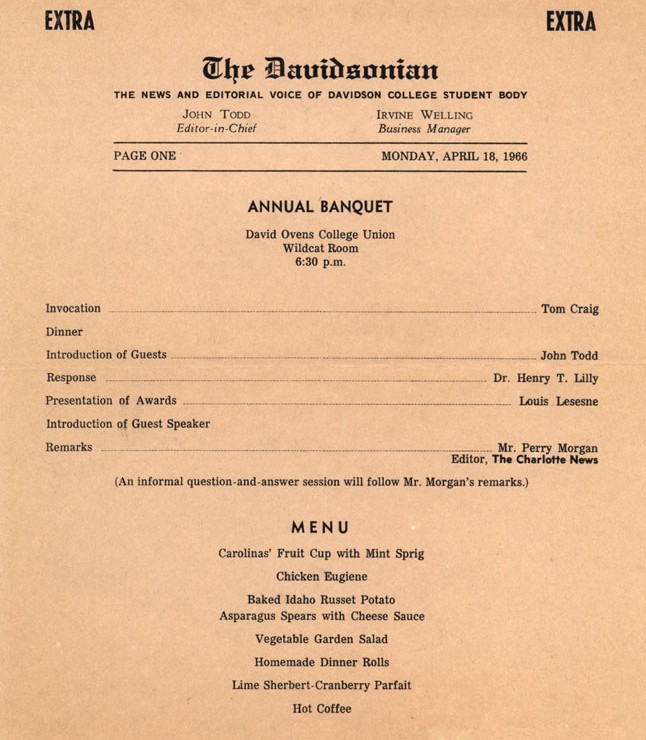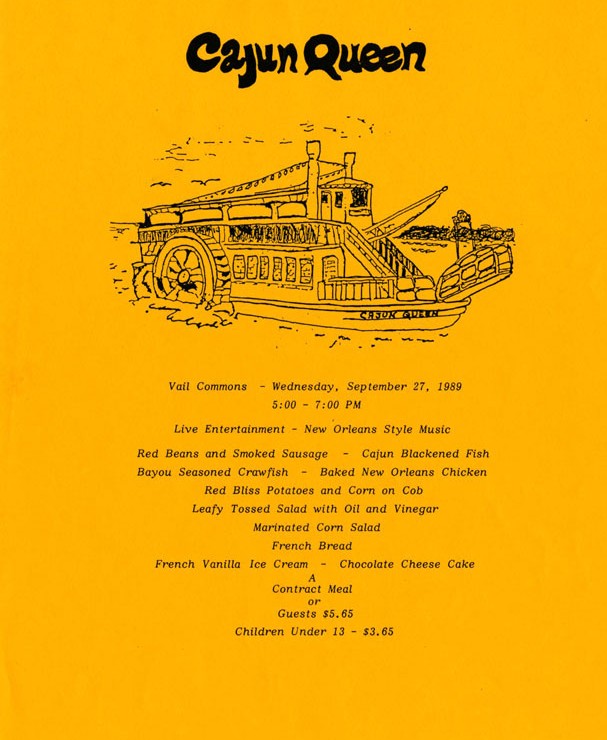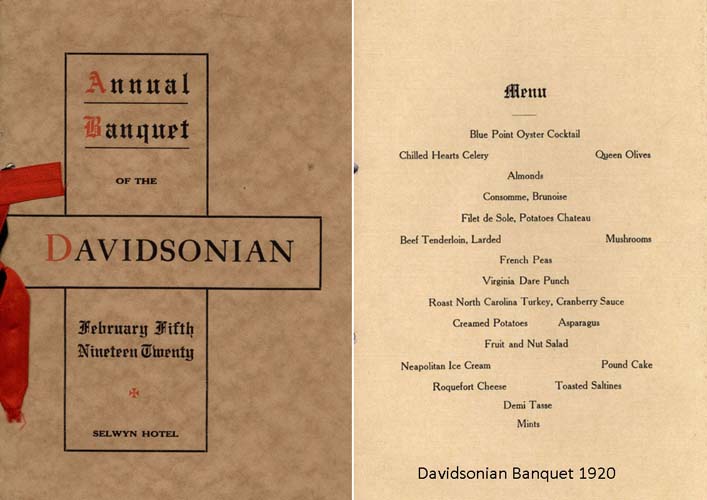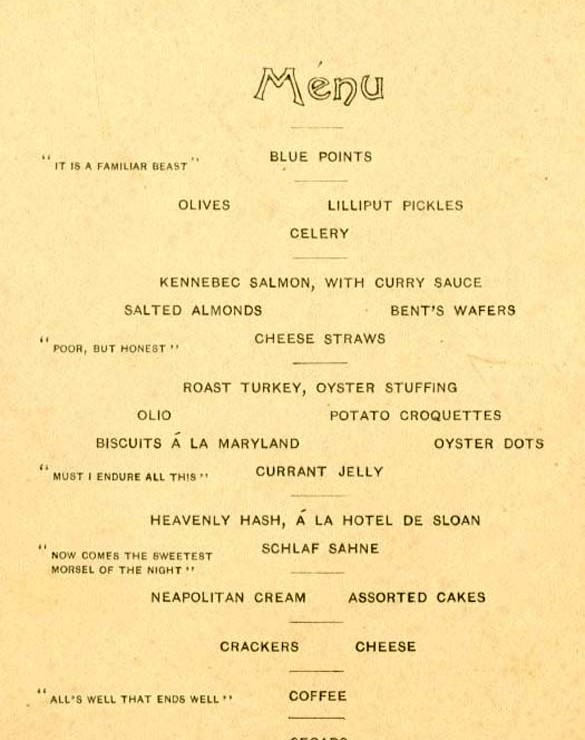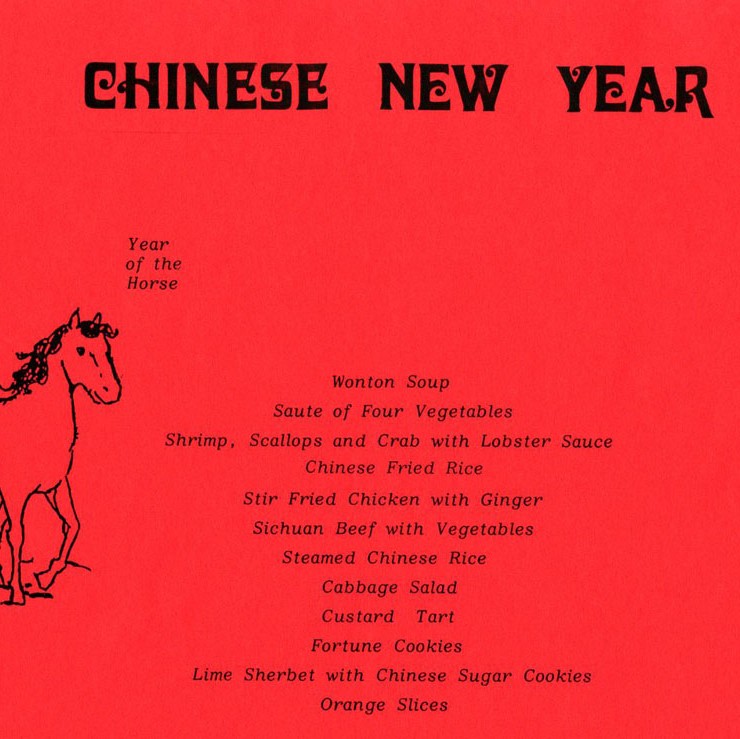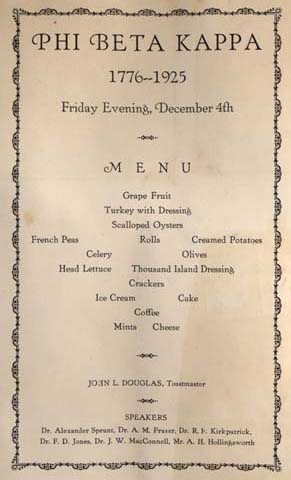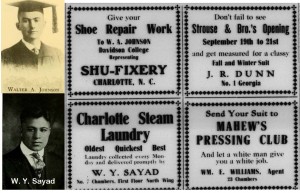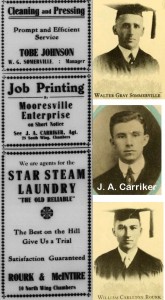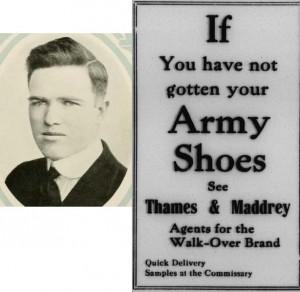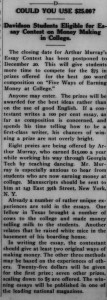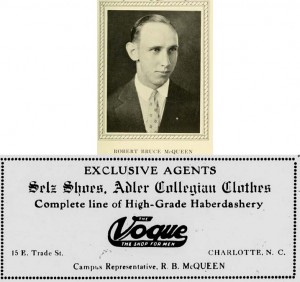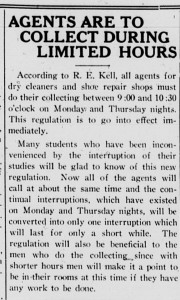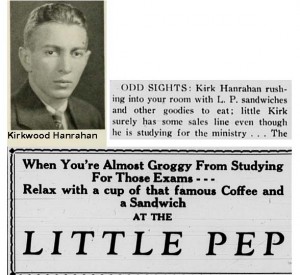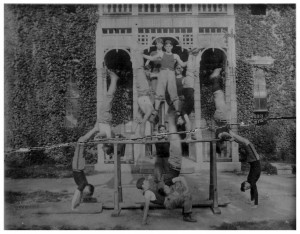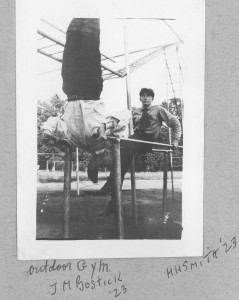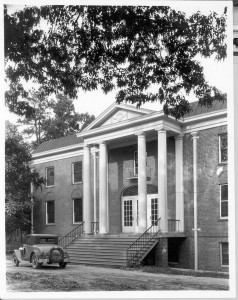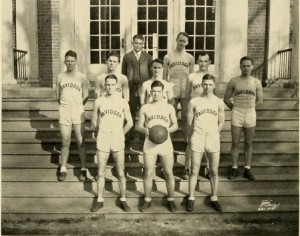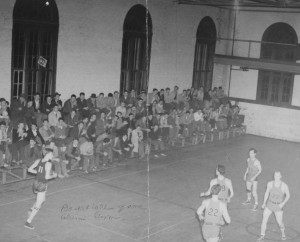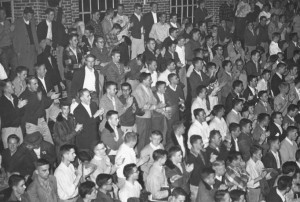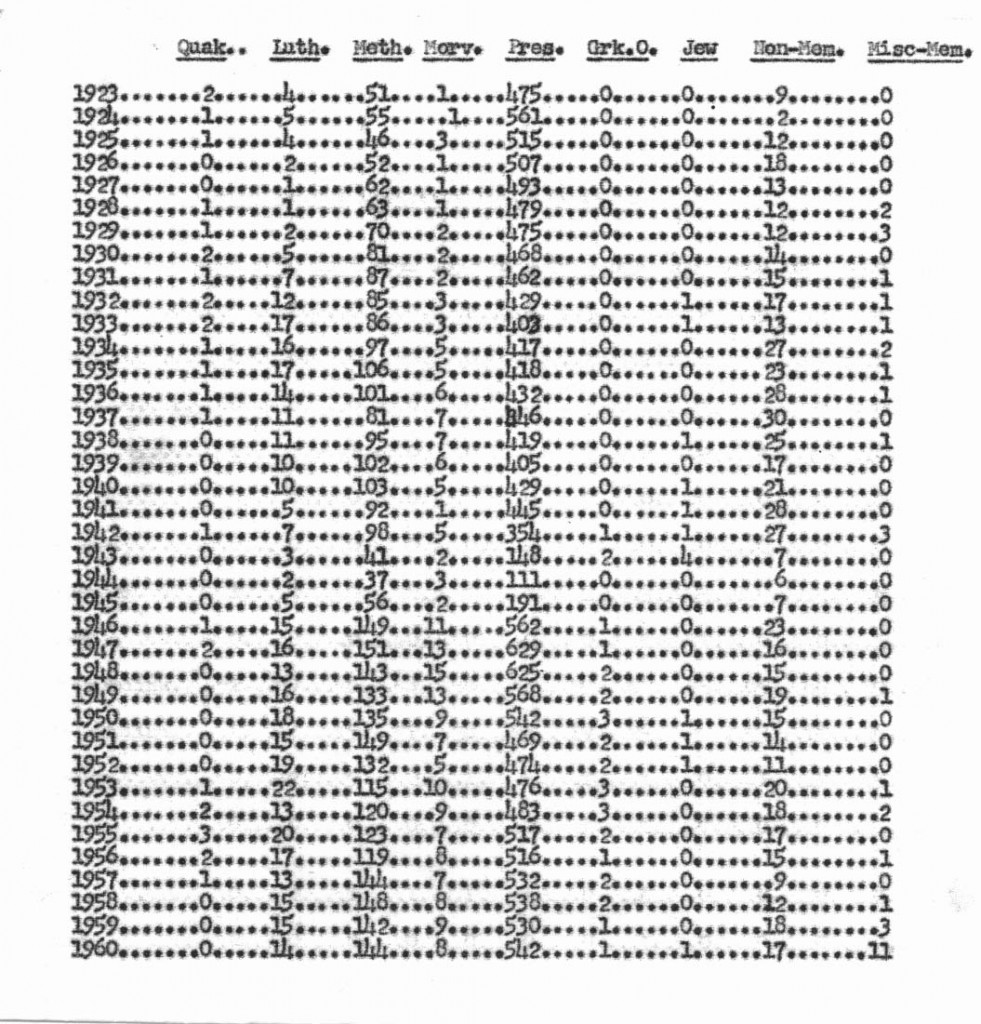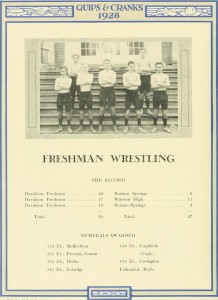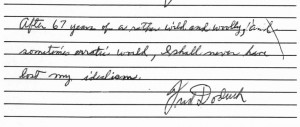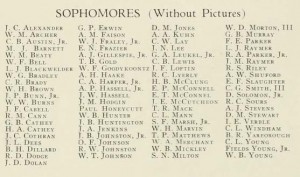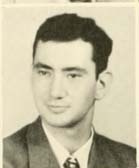Spring is not quite here – the dogwoods are not yet in bloom – but crowds of high school students with parents in tow (or is it parents with students in tow?) are surging across campus and checking out the town. The ritual of college visits brings to mind the parallel history of college brochures and raises the questions, “how has Davidson College described itself over the years? And how has the town promoted itself?”
On a 1956 brochure, images of Chambers, the Union, and Johnston Gym ran counterpoint to the question HAVE YOU CHOSEN YOUR CAREER? The tone is serious, “Because a college education today is so important, you must consider carefully every opportunity that exists for you in higher education before deciding what you will do in four years of undergraduate work and where you will take that work.” But for those who have not chosen a career some reassurance is given:
Many students who enroll at Davidson are undecided about their careers. . . . Each student is helped to find the field in which he can attain the highest degree of happiness and success, to fulfill his potential as a a citizen.
A few years later, the text remains very similar (the first sentence is identical) but the graphics have gotten larger and the emphasis on careers shifted somewhat:
The Davidson educational program seeks to prepare men not simply for making a living but for living lives of service as responsible citizens and leaders in the community, the state, and the nation.
By 1966, the college added color and changed the focus a bit. Starting with a bit of college history, the brochure promotes Davidson as a “particular kind of college.” Specifically:
a small residential college for men, priding itself on the personal relationship between students and faculty. Its educational program is grounded in a sound liberal arts curriculum and a devotion on the part of its faculty, to the primary task of teaching undergraduates. A deeply rooted student government tradition is based on a concept of individual honor as old as the college itself.
Less color but more pictures in 1969 with captions including:
On the beautiful front campus, Dr. Mahoney’s class successfully combines learning with informality;
In Wednesday evening “Open End Discussions” students exchange ideas with faculty members on topics from politics to Davidson’s new curriculum;
The campus takes on a “new look” when the students invite more than 700 dates from nearby women’s colleges to the campus for dance weekends.
This 1974 brochure answered the question “Why choose Davidson?” by noting that
– We have a first quality academic program (stating bluntly – Our academic program is not just good. It is one of the best in the country.)
– You can learn many different ways (assuring students that at the heart of academics at Davidson are shared learning experiences between able professors and able students).
– People at Davidson care about other people (This is no accident. We select students how have shown a concern for others.)
– We’re in the country (just outside a city)
– We play big-time basketball
The town of Davidson was looking back more than the college. No technology highlights in a 1987 brochure. Instead it notes that the Davidson Dry Goods (now Toast) still has the original tin molding on the ceiling and the Natural Resources building (now home to Summit Coffee) served “as the town police station with an upstairs morgue.”
A decade later, Davidson was highlighting its selectivity, educational program, Rhodes Scholars, and faculty along with a claim that “Davidson is a leader among liberal arts colleges in integrating technology into the liberal arts.”
The college’s 1991 brochure returned to the question Why Davidson? The answers include:
– As a Davidson student, you will learn to think broadly and deeply
– Davidson focuses on the individual
– Students at Davidson are bright, talented, and highly motivated
The town brochure for the same year still focused on the historic for its “three block stretch of early 20th century buildings where you’ll find a wonderful assortment of unusual stores” (no mention of morgues).
2011 echoed 1969 prominently featuring informal learning outside but the text talks to a new generation – “you are searching for a college, the right intersection between who you are now and who you hope to become” – and also encourages them to go online.
The town also did a bit of updating – going with a new slogan “Hip and Historic.”
And expanding from just Main Street to South Main and Exit 30.
The 2013 college brochure goes even farther in the 21st century using a hashtag graphic to place Davidson in the digital world.
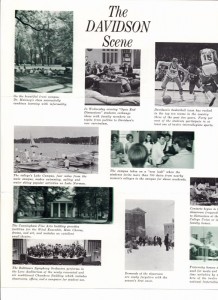
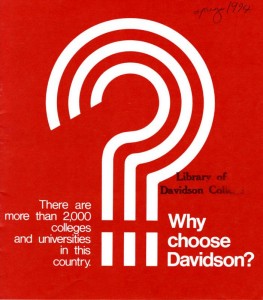
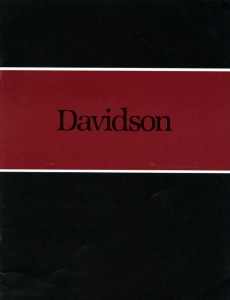
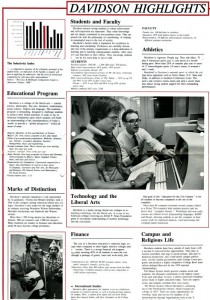
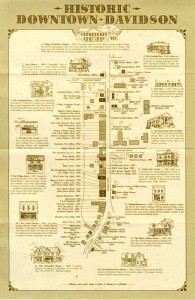
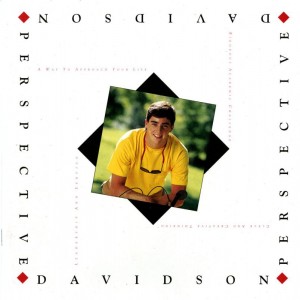
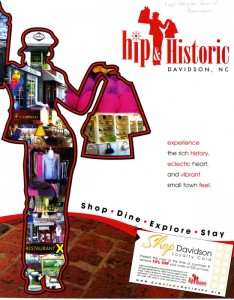
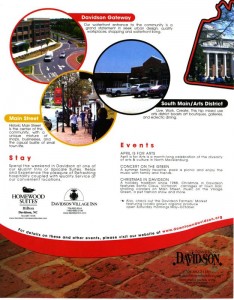
![2013 brochure cover with a pound symbol and "[Trending]" beneath it](../../../../wp-content/uploads/sites/5/2015/03/Dcadmin2013-209x300.jpg)
